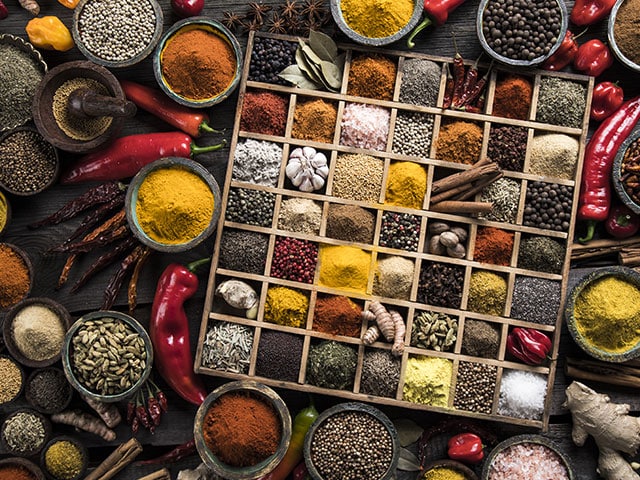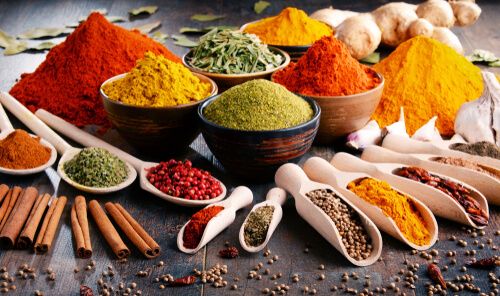Blog
Indian spices wholesale price list?

Indian spices have long been celebrated for their exceptional flavors, aromas, and cultural significance. These aromatic treasures are not only staples in Indian cuisine but also integral ingredients in kitchens worldwide. If you’re a culinary enthusiast, chef, or business owner seeking to explore the world of Indian spices and their wholesale prices, this article is your comprehensive guide. We’ll delve into the essential spices, factors influencing wholesale prices, and tips for sourcing quality spices in India.
Essential Indian Spices
Before diving into the wholesale price list, let’s familiarize ourselves with some of the most commonly used Indian spices:
- Turmeric: Known for its vibrant color and earthy flavor, turmeric is a cornerstone of Indian cooking.
- Cumin: Cumin seeds offer a warm, nutty flavor and are frequently used in spice blends and curry recipes.
- Coriander: Ground coriander adds a mild, citrusy note to dishes, complementing other spices.
- Cardamom: Both green and black cardamom pods are used for their unique, aromatic qualities in both sweet and savory dishes.
- Cinnamon: Cinnamon sticks or powder impart a sweet, woody flavor to curries and desserts.
- Cloves: These aromatic flower buds provide a strong, pungent flavor and are often used sparingly.
- Red Chili Powder: Adds heat and depth to various dishes; its spiciness can vary depending on the type of chili used.
Factors Influencing Wholesale Prices
Several factors can influence the wholesale prices of Indian spices:
- Quality and Grade: The quality and grade of spices can significantly impact their prices. Premium or organic spices often command higher prices.
- Harvest Season: The timing of the harvest can affect prices. Spices harvested during their peak season are generally more affordable.
- Geographical Origin: The region where spices are grown can influence their prices. Some regions are known for producing specific spices of exceptional quality.
- Processing and Packaging: Spices that undergo additional processing or have specialized packaging may be priced higher.
- Market Demand: Market demand, both within India and internationally, can lead to price fluctuations. High demand for a particular spice may drive up prices.
Tips for Sourcing Quality Spices
When seeking to purchase Indian spices at wholesale prices, here are some tips to ensure you obtain quality products:
- Direct Sourcing: Establish direct relationships with spice farmers or reputable wholesale suppliers to ensure authenticity and quality.
- Certifications: Look for spices with certifications such as organic, fair trade, or quality assurance to ensure they meet international standards.
- Inspect the Spice: Examine the spices for freshness, color, and aroma. Avoid purchasing spices that appear dull, faded, or have an off-putting odor.
- Sample Testing: Request samples before making bulk purchases to assess the spice’s quality and flavor.
- Storage Conditions: Ensure that the spices are stored in appropriate conditions to maintain their freshness and flavor.
-
Bulk Quantity Discounts: When purchasing Indian spices in bulk, you can often negotiate better prices and discounts with wholesalers. Buying larger quantities can be cost-effective, especially for businesses that have a high demand for spices.
Storage and Shelf Life: Consider the shelf life of the spices you intend to purchase. Some spices have a longer shelf life than others, and buying in bulk should align with your usage to avoid spice degradation over time. Proper storage conditions, such as airtight containers and cool, dry spaces, can help preserve the freshness of spices.
Value-Added Products: In addition to whole spices, explore value-added spice products like spice blends (masalas), essential oils, extracts, and spice pastes. These products can provide convenience and enhance your culinary creations, and they may have different pricing structures compared to whole spices.
Market Research: Keep an eye on market trends and the demand for specific spices. Prices can fluctuate based on changing consumer preferences and global factors, so being informed about market dynamics can help you make cost-effective choices.
Quality Over Price: While price is important, prioritize the quality of spices. High-quality spices will elevate the flavors of your dishes and enhance customer satisfaction. Consider sourcing from reputable suppliers known for their commitment to quality.
Local Sourcing: Exploring local or regional spice suppliers can sometimes offer cost advantages due to reduced transportation costs. Additionally, local suppliers may provide fresher spices with a stronger connection to the local culinary culture.
Diversify Suppliers: To mitigate risks and ensure a stable spice supply, consider diversifying your spice suppliers. Having multiple sources can provide flexibility and reduce vulnerability to supply disruptions.
Negotiation Skills: Hone your negotiation skills when dealing with spice suppliers. Building strong relationships and effective communication can lead to better pricing terms and long-term partnerships.
Sampling and Testing: Before committing to large orders, sample and test the spices to ensure they meet your quality and flavor expectations. This practice can prevent costly mistakes and ensure that you are satisfied with the products.
Unveiling the Spice Bazaar
Navigating the world of Indian spices and their wholesale prices can be a rewarding journey. These aromatic gems not only enrich the flavors of dishes but also provide insight into India’s rich culinary heritage. Whether you’re a professional chef seeking to create exquisite dishes or a business owner looking to source quality spices, understanding the factors influencing prices and following best sourcing practices will help you make informed choices in the vast and vibrant Indian spice bazaar.
In conclusion, navigating the wholesale price list of Indian spices requires a combination of market knowledge, quality assessment, and strategic sourcing. By considering the factors influencing spice prices and following best practices, you can make informed decisions that align with your culinary or business needs while delivering delightful flavors to your dishes or products.



